Special Series - Smuggling
News > 2012 > Special Series-Smuggling > Chapter 1
Florida: A Red State with the Smuggler's Blues ? EARLY SMUGGLING
by Rob Phillips December 2012
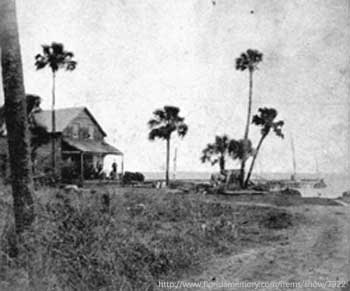 Prior to Florida’s statehood in 1845 and for decades afterward, the Sunshine State was not much to boast about. With only 34,000 residents in 1830, the oppressive heat, hostile Seminole Indians, dangerous wildlife and swarms of mosquitoes plagued any soul who decided to venture within its borders. These conditions seemed to nurture those that lived on the fringe of society and its rule-making smothering restrictions. It is said that a person could venture to “La Florida” to begin anew and for all intents and purposes never be seen or heard from again. This seemingly life of freedom and escape from societal pressures indeed had a price. True independence could be had on the vast Florida Peninsula, but it would often demand sinister payment in the form of failed crops, vicious hurricanes, devastating disease or quite simply madness from the extreme conditions. These unfortunate, but common events coupled with a sense of lawlessness and unparalleled isolation compelled many of Florida’s inhabitants to begin to live outside of normal mindsets and be open to other means of existence.
Prior to Florida’s statehood in 1845 and for decades afterward, the Sunshine State was not much to boast about. With only 34,000 residents in 1830, the oppressive heat, hostile Seminole Indians, dangerous wildlife and swarms of mosquitoes plagued any soul who decided to venture within its borders. These conditions seemed to nurture those that lived on the fringe of society and its rule-making smothering restrictions. It is said that a person could venture to “La Florida” to begin anew and for all intents and purposes never be seen or heard from again. This seemingly life of freedom and escape from societal pressures indeed had a price. True independence could be had on the vast Florida Peninsula, but it would often demand sinister payment in the form of failed crops, vicious hurricanes, devastating disease or quite simply madness from the extreme conditions. These unfortunate, but common events coupled with a sense of lawlessness and unparalleled isolation compelled many of Florida’s inhabitants to begin to live outside of normal mindsets and be open to other means of existence.
To this day, industry in Florida revolves around cheap and plentiful labor. As many Northern transplants to Florida soon learn, the Sunshine State’s wages pale in comparison to many bustling Northeast cities. This is due in-part to a largely service-orientated economy that demands cheap labor to manicure private golf courses, shuck fresh oysters and peddle souvenirs to unsuspecting tourists. In early Florida and in the Deep South, demand for cheap labor was also of utmost importance; the difference was that the labor they sought didn’t carry the burden of employer funded workmen’s compensation insurance or paid time off benefits to employees.?
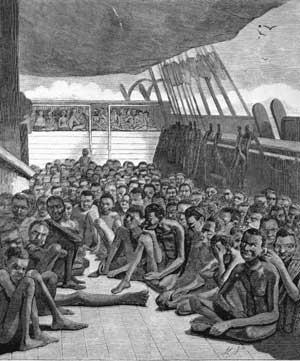 |
| Slave deck of the bark "Wildfire" brought into Key
West
|
Officially taking effect in 1808, the Act Prohibiting Importation of Slaves of 1807 was a United States Federal law that stated that no new slaves were permitted to be imported into the United States. Similar to the phenomenon of the 20th Century’s new anti-drug laws spawning an entire generation of drug smuggling entrepreneur, the newly minted slavery laws inspired the same monetary ambitions for many.
The vast coastline and sparse population in early Florida made slave smuggling a very lucrative career for many early smugglers. At the time, the re-exportation of less-expensive slaves from Cuba to the Florida territory made many a sailor rich beyond his dreams. Like today, the slave smuggler had many dangers in transporting his illegal cargo. Piracy was rampant on the waters around Florida and coupled with the US Navy’s Mosquito Squadron pursuing would-be slave smugglers, the voyage was filled with uncertainty. In fact, the US Government considered slave smuggling an act of piracy which carried a penalty of death.
The scourge of slave smuggling was rampant until the end of the War Between the States and reached all points of Florida. On the east coast of Florida, sizeable slave depots were located on Amelia Island, Mosquito Lagoon and Indian River until a military detachment occupied the area and disbanded the operation in 1817. In South Florida, a wealthy businessman who owned a third of Key West was rumored to house smuggled slaves in his salvage business warehouse complex awaiting transport north for auction. This terrible chapter in American history was not the only instance where living things were smuggled in early Florida. In fact, some types of this specialized cargo were actually transported out of the state.
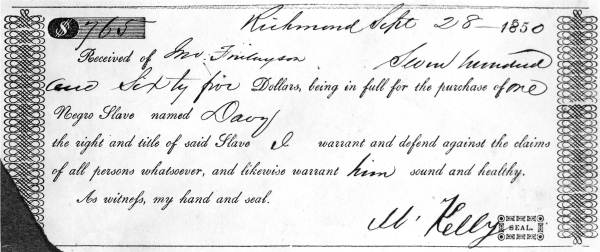 |
| A receipt for a slave named Davy in 1850. Slave was purchased by John Finlayson, of Jefferson County, Florida, from M. Kelly, of Richmond, Virginia, for $765. Source: http://www.floridamemory.com/items/show/794 |
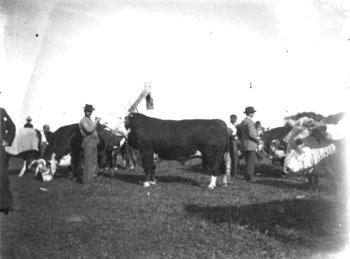 |
| Men with Cattle in Apalachicola in 1840's Source: http://www.floridamemory.com/items/show/306 |
When Florida seceded from the Union in 1861, its greatest contribution to the Confederacy was not troops, munitions or brilliant military generals. In fact, the greatest resource that Florida had to offer the war effort was beef cattle from the central interior of the state and salt from the coast. These vital war materials were of such concern, that the Lincoln government began the “Anaconda Plan” to surround Florida with a Union naval blockade to prevent Confederate materials to be supplied to forward units. The smuggling of cattle from Florida was not only destined for hungry Rebel troops. At the time, the current rate for a head of cattle in Havana, Cuba was $30 compared to $3 in the Confederate South. This dramatic price difference prompted many Confederate smugglers to transport Florida livestock through the Union blockade to Cuba to reap the monetary just 90 miles off of Florida’s coast. Perhaps one of the most famous blockage runners from Florida was Captain James McKay of Tampa, who actually has a body of water in the upper Tampa Bay region named after him. Captain McKay, not being a US citizen, ran materials to Great Britain under the British Flag returning with much needed items for the Confederacy. Captain McKay’s efforts prompted the Union navy to heighten their efforts to control the seafaring operations of Tampa Bay and Charlotte Harbor to the south. Despite the best Union efforts, due to the vastness of the Florida coastline and the inherent knowledge of the local waters by local seaman, the Union’s efforts had little effect on the smuggling operations and they continued to thrive even in the post-Civil War years.
Since Florida’s status as a once wild and remote territory and its eventual entry into the Union as the 27th state, its vast shoreline has been a natural springboard in the illicit vocation of the transport of prohibited materials. This natural terrain feature was taken advantage of early in the state’s history and as the years passed, this practice was not only continued, but began to be honed to an art form and eventually change the landscape and sometimes the economy of the entire region.
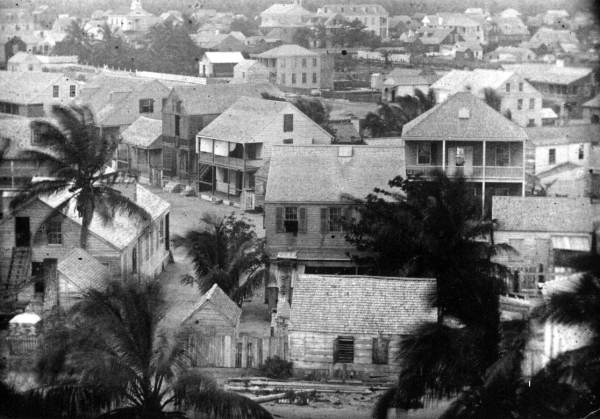 |
| Key West aerial in 1849. Key West has been a hub for smuggling for the past 200 years. Source: http://www.floridamemory.com/items/show/4962 |
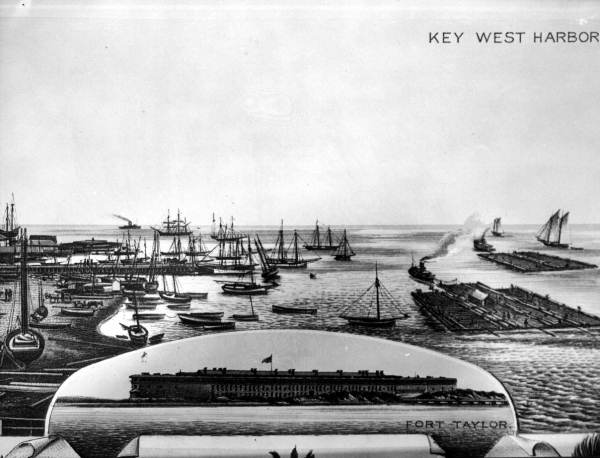 |
| Key West harbor in 1885.s Source: http://www.floridamemory.com/items/show/5091 |
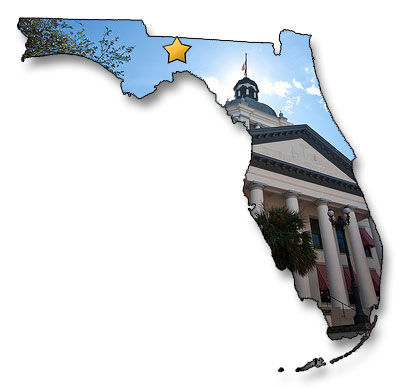 |
| Photo used under Creative Commons from flickr user Three if by Bike |
Bootlegging, Square Groupers, The Cocaine Smugglers, Human Trafficking |















